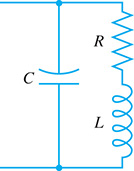11.5 Multiplication and Division of Radicals
Multiplication of Radicals • Power of a Radical • Division of Radicals • Rationalizing the Denominator
When multiplying expressions containing radicals, we use the equation along with the normal procedures of algebraic multiplication. Note that the product of two radicals can be combined only if the orders of the radicals are the same. The following examples illustrate the method.
EXAMPLE 1 Multiplying monomial radicals

Note that we express the resulting radical in simplest form.


EXAMPLE 2 Multiplying binomial radicals
This is illustrated in the following example.
NOTE
[When raising a single-term radical expression to a power, the power can be applied to each factor of the term separately. However, when raising a binomial to a power, the entire binomial must be multiplied by itself the indicated number of times.]
EXAMPLE 3 Power of radical
CAUTION
Again, we note that to multiply radicals and combine them under one radical sign, it is necessary that the order of the radicals be the same.
If necessary, we can make the order of each radical the same by appropriate operations on each radical separately. Fractional exponents are frequently useful for this purpose.
EXAMPLE 4 Use of fractional exponents
DIVISION OF RADICALS
If a fraction involving a radical is to be changed in form, rationalizing the denominator or rationalizing the numerator is the principal step. Although calculators have made the rationalization of denominators unnecessary for calculation, this process often makes the form of the fraction simpler. Also, rationalizing numerators is useful at times in more advanced mathematics. We now consider rationalizing when the denominator (or numerator) to be rationalized has more than one term.
NOTE
[If the denominator (or numerator) is the sum (or difference) of two terms, at least one of which is a radical, the fraction is rationalized by multiplying both the numerator and the denominator by the difference (or sum) of the same two terms, if the radicals are square roots.]
EXAMPLE 5 Rationalizing the denominator
The fraction can be rationalized by multiplying the numerator and the denominator by In this way, the radicals will be removed from the denominator.

The reason this technique works is that an expression of the form is created in the denominator, where a or b (or both) is a radical. We see that the result is a denominator free of radicals.
EXAMPLE 6 Rationalizing the denominator
Rationalize the denominator of and simplify the result.

We note that, after rationalizing the denominator, the result has a much simpler form than the original expression.
As we noted earlier, in certain types of algebraic operations, it may be necessary to rationalize the numerator of an expression. This procedure is illustrated in the following example.
EXAMPLE 7 Rationalizing the numerator—semiconductor expression
In studying the properties of a semiconductor, the expression
is used. Here, and are constants and V is the voltage across a junction of the semiconductor. Rationalize the numerator of this expression.
Multiplying numerator and denominator by we have
Exercises11.5
In Example 2(a), change to and then perform the multiplication.
In Example 4(a), change to and then perform the multiplication.
In Example 5, change the sign in the denominator from to and then rationalize the denominator.
In Example 6, rationalize the numerator of the given expression.
Are there any values of x or y such that
For what real values of x and y is
By substitution, show that is a solution of the equation
 For the quadratic equation if a, b, and c are integers, the product of the roots is a rational number. Explain.
For the quadratic equation if a, b, and c are integers, the product of the roots is a rational number. Explain.Determine the relationship between a and c in if the roots of the equation are reciprocals.
Evaluate if and
Rationalize the denominator of by using the equation (Hint: The denominator is of the form )
One leg of a right triangle is and the hypotenuse is 6. What is the area of the triangle?
For an object oscillating at the end of a spring and on which there is a force that retards the motion, the equation must be solved. Here, b is a constant related to the retarding force, and k is the spring constant. By substitution, show that is a solution.
Among the products of a specialty furniture company are tables with tops in the shape of a regular octagon (eight sides). Express the area A of a table top as a function of the side s of the octagon.
An expression used in determining the characteristics of a spur gear is Rationalize the denominator.
When studying the orbits of Earth satellites, the expression arises. Express it in simplest rationalized radical form.
In analyzing a tuned amplifier circuit, the expression is used. Rationalize the denominator.
When analyzing the ratio of resultant forces when forces F and T act on a structure, the expression arises. Simplify this expression.
The resonant frequency of a capacitance C in parallel with a resistance R and inductance L (see Fig. 11.9) is
Combine terms under the radical, rationalize the denominator, and simplify.

Fig. 11.9
In fluid dynamics, the expression arises. Combine terms in the denominator, rationalize the denominator, and simplify.
